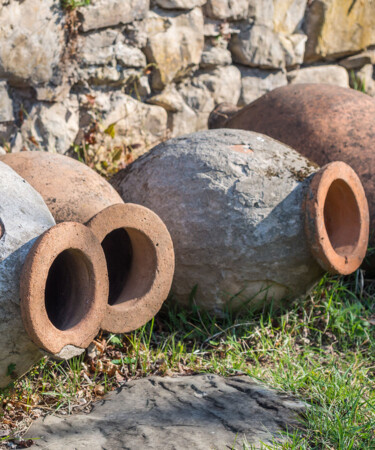It’s well known that wine was an essential part of ancient Roman life. In fact, many sources suggest that Roman citizens were drinking about 100 gallons of wine per year. But how that wine largely looked, smelled, and tasted has been a mystery — until now. A new archaeological study of Roman pottery is providing insights into the winemaking techniques of the time, and how these methods likely impacted the liquid’s flavor profile.
In the study, published in the journal Antiquity, archaeologists Dr. Dimitri Van Limbergen from Ghent University and Dr. Paulina Komar from the University of Warsaw compared Roman clay jars called dolia to the modern winemaking vessels we use today. The shape of the dolia appears similar to that of the qvevri, the clay vessels used in Georgia, making a connection between ancient Roman wine and contemporary Georgian wine.
“By burying the dolia in the ground, temperature and pH could be controlled, encouraging the formation of surface yeasts and a chemical compound called sotolon,” the study reveals. “This gives wine a slightly spicy flavor with aromas of toasted bread and walnuts.”
The clay vessels used by ancient Romans were also porous compared to the modern, stainless-steel tanks popular in wine production today. Steel tanks are completely sealed, limiting oxygen exposure during the winemaking process, but the small holes in dolia allow oxidation throughout the fermentation process. This can impart richness and complexity, with flavors like roasted nuts and bruised apples. The mineral-rich nature of the clay also likely added a drying sensation to the wine.
The varying sizes and shapes of the storage containers that have been discovered from this time period also suggests that the ancient Romans were aware of the various techniques they could use to manipulate the flavor profile of their wines, and had substantial control over the final product.
“The value of identifying, often unexpected, parallels between modern and ancient winemaking lies in both debunking the alleged amateurish nature of Roman winemaking and uncovering common traits in millennia-old vinification procedures,” Dr. Van Limbergen said in the study.
